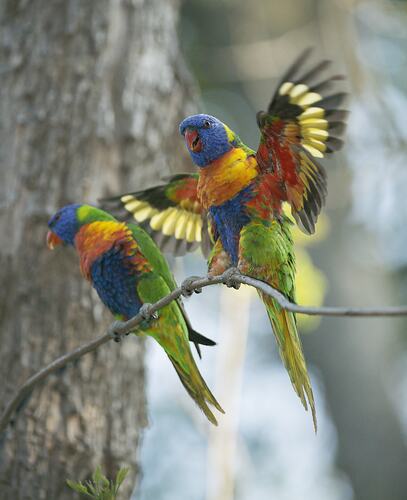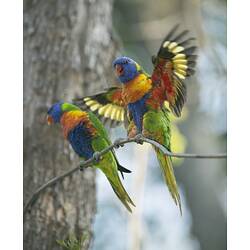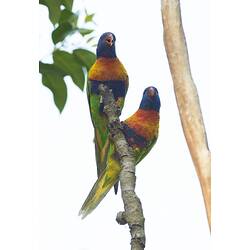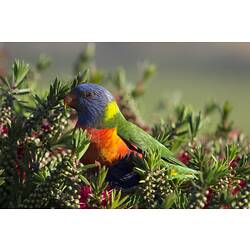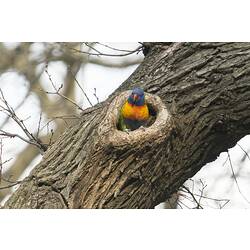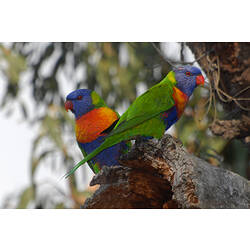General Description
An unmistakable parrot. Rainbow Lorikeets have a blue head, a bright red bill, and bright green wings, back and tail. Their underwing and breast is red with a blue-purple patch on the abdomen. Both sexes have a yellow stripe on the upper wing. The bill to tail length is up to 30 cm.
Biology
Rainbow Lorikeets usually occur in pairs. They often roost communally and can be seen in loud, fast-moving flocks. They nest in hollows in eucalyptus trees, lining the base of a hollow with decayed debris. Females incubate two to four eggs, and both parents feed the chicks. Their main food is nectar from eucalypts, but they also eat fruits, seeds and insects. They are mostly sedentary but may move in response to seasonal fruiting and flowering of vegetation. Rainbow Lorikeets have become extremely common in urban areas due to the abundance of both artificial and natural food sources.
Distribution
Indonesia, Papua New Guinea. Eastern, northern, eastern, and south-eastern mainland Australia.
Habitat
A wide variety of treed habitats including woodlands, rainforests, agricultural lands and urban areas.
More Information
-
Animal Type
-
Animal SubType
-
Brief Id
A brightly coloured parrot with red, orange, yellow, green, blue and purple feathers. Easy to spot in urban areas.
-
Colours
Green, Red, Blue
-
Maximum Size
30 cm
-
Habitats
-
Diet
Nectar
-
Endemicity
-
Conservation Statuses
CITES: Trade restrictions (Appendix II), FFG Threatened List: Not listed, EPBC Act 1999: Not listed, IUCN Red List: Least Concern
-
Taxon Name
-
Common Name
Coconut Lorikeet
-
Other Names
Rainbow Lorikeet
-
Kingdom
-
Phylum
-
Subphylum
-
Class
-
Order
-
Family
-
Genus
-
Species Name
haematodus
